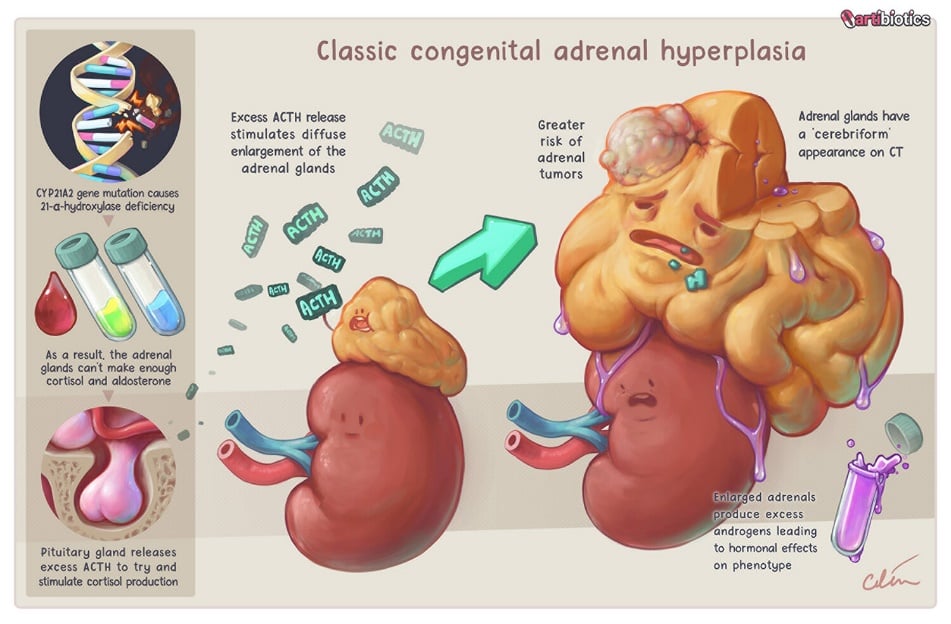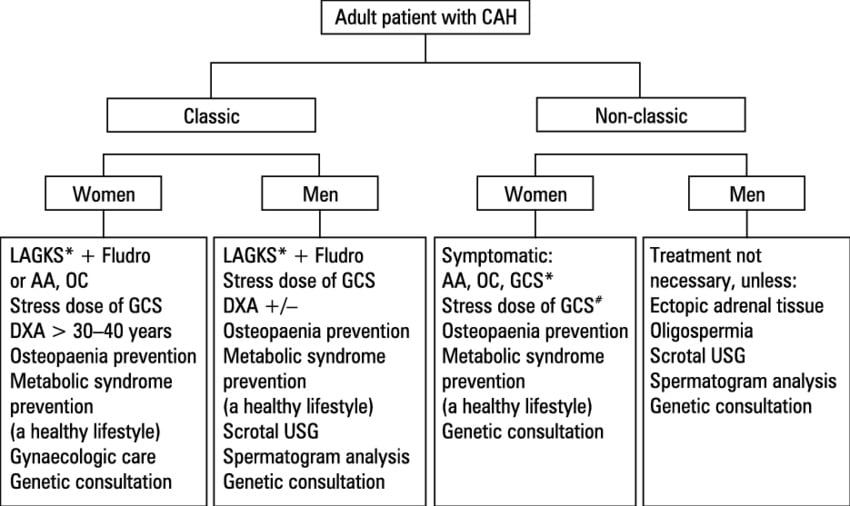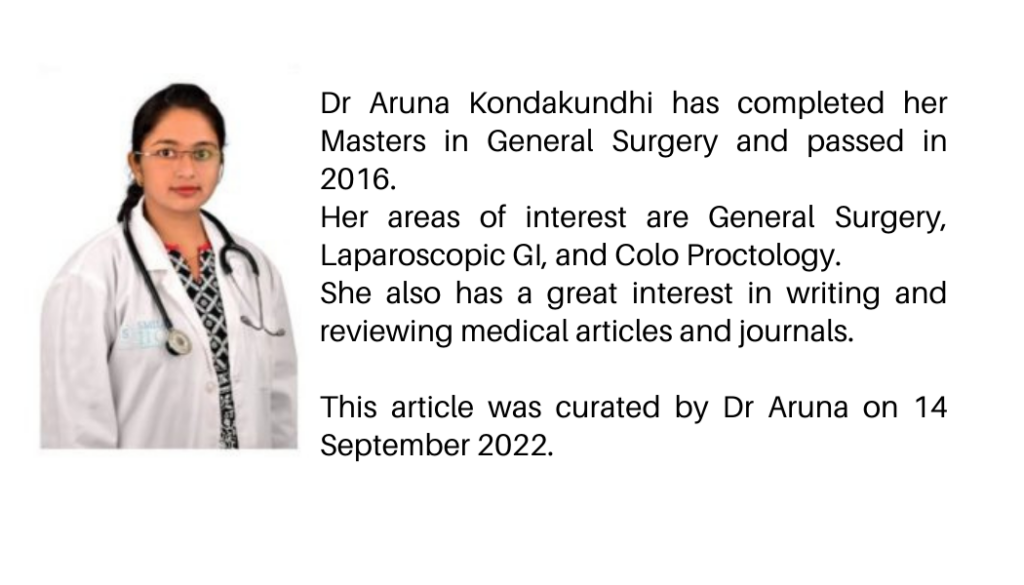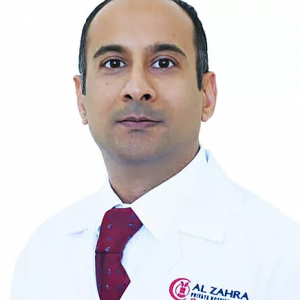Congenital Adrenal Hyperplasia (CAH)
Congenital Adrenal Hyperplasia (CAH) is an inherited group of genetic disorders that limits hormone production in the adrenal glands. It is also called Adrenogenital Syndrome. The adrenal gland is a pair of walnut-sized organs above the kidneys. Read More
Top Doctors For Congenital Adrenal Hyperplasia (CAH) Treatments
Top Hospitals For Congenital Adrenal Hyperplasia (CAH) Treatments
Congenital Adrenal Hyperplasia (CAH)
Table of contents
What is Congenital Adrenal Hyperplasia (CAH)?
Congenital Adrenal Hyperplasia (CAH) is an inherited group of genetic disorders that limits hormone production in the adrenal glands. It is also called Adrenogenital Syndrome. The adrenal gland is a pair of walnut-sized organs above the kidneys. These organs are made up of two parts; the outer part, called the “cortex,” and the inner part, called the “medulla,” and each produces important hormones.
- The cortex produces cortisol, aldosterone, and androgens.
- The medulla produces dopamine, adrenaline, and noradrenaline.
In CAH patients, this genetic problem results in a lack of one of the 5 enzymes needed to synthesize cortisol in the adrenal cortex. CAH affects a child’s normal growth and development.

What are the types of CAH?
There are 2 major types of CAH, and they include:

- Classic CAH
This form is rare and is usually seen in infants. Classic CAH is subdivided into 2 forms:
a) Salt Wasting
In severe enzyme deficiency, insufficient aldosterone production can lead to salt wasting, failure to thrive (stunted growth), and potentially fatal hypovolemia and shock. Salt loss CAH poses an increased risk of early neonatal morbidity and death.
b) Simple Virilizing
This is due to 21-hydroxylase deficiency and is characterized by genital ambiguity and virilization of the external genitalia in females and pseudo puberty in both boys and girls
- Non-classic CAH
This is a milder and more common form of CAH. There are no clear symptoms of non-classic CAH when a baby is born, but evidence may begin in late childhood or early adulthood. Cortisol may be the only hormone that is deficient. Teenage and adult females suffering from non-classic CAH may have a normal appearance in genitals at birth, but later in life, they may experience;
- Irregular or absent menstrual periods,
- Severe acne,
- Masculine features like facial hair, excessive body hair, deepened voice, etc.
Other signs in both males and females include:
- Early development of pubic hair,
- Rapid growth during childhood,
- Shorter final height.
Causes
A 21-hydroxylase deficit is the most common cause of congenital adrenal hyperplasia.
These factors increase your risk of developing CAH:
- Autosomal Excessive Inheritance Pattern; is the combination of 21-hydroxylase deficiency with other rare enzyme deficiencies that can cause CAH.
Children with this condition have two parents who are CAH patients or are carriers of the genetic mutation that creates the condition.
- Certain ethnic heritages like Hispanic, Italian, Ashkenazi Jews, Yugoslav, etc.
Symptoms
Among the signs that show as a result of the type of CAH a child has, other symptoms may include:
- Excessive urination of sodium.
- Early, delayed, or absent puberty.
- Virilism.
- Hyperandrogenism.
- Salt wasting causes severe symptoms that include- hyponatremia (low sodium levels), heart problems, low blood sugar levels, dehydration, shock, and metabolic acidosis.
How is congenital adrenal hyperplasia be treated?
There is no cure for congenital adrenal hyperplasia; however, with proper treatment, most victims can lead normal lives. Treatments are aimed at the management and control of the syndrome. And this involves:
- Replacement Hormone Medication; steroids like hydrocortisone, prednisone, dexamethasone, etc.; and hormone-based chemotherapy.
- Reconstructive Surgery; for genital reconstruction.
For both treatments, do visit a medical consultant for advice and direction.
What are the complications associated with congenital adrenal hyperplasia?
People who have classic CAH are at risk of adrenal crisis because of very low cortisol levels in the blood, which can cause:
- Dehydration,
- Vomiting,
- Low blood sugar levels,
- Shock.
Aldosterone may also be low, leading to:
- Low sodium level,
- Low potassium level,
- Dehydration.
Either classic or non-classic CAH may cause fertility problems in both male and female genders.
Can CAH be prevented?
Congenital adrenal hyperplasia is an inherited disease that starts from birth and continues throughout life. There is no known way to prevent it. If a person falls into the risk group and is about to start a family, it is recommended that they consult a genetic counselor.
FAQ
Treatment is with steroids that replace the low hormones. Infants and children take a form of cortisol called “hydrocortisone,” while adults can take hydrocortisone, prednisone, or dexamethasone. All of these replace cortisol.
Congenital adrenal hyperplasia is a genetic problem that results in the leak of one of the enzymes needed to synthesize these hormones. Although there is no cure, most people with CAH can lead normal lives with proper treatment.
All forms of CAH are inherited. Either one or both parents may have CAH or may be carriers of the genetic mutation that cause the condition and pass it down to their children through the genetic strand.
Moderate drinking of alcohol does not affect CAH or its treatment. However, much alcohol intake can affect the breakdown of steroids in the liver rendering the treatment less effective. Low alcohol intake is advised for CAH patients.
Pregnancy is possible for CAH patients while on routine maintenance therapy. About 80% of women with simple virilizing and 60% of women with salt-wasting forms are fertile.
These tests can do the diagnosis of CAH. They include:
1) Parenteral testing- They include:
a) Amniocentesis- During this test, a small needle is used to take a sample of amniotic fluid from the mother’s womb and sent for microscopic examination of the cells.
b) Chorionic villus sampling- During this test, cells are taken from the placenta for microscopic studies.
2) Tests performed for children and young adults are:
a) Physical examination- During the physical examination, the doctor will examine the patient completely to look for any signs of abnormalities.
b) Medical and hereditary history- The doctor records the medical history and hereditary history of the patient for further evaluation and care.
c) Blood and urine tests
d) Genetic testing
Classic CAH is one of the most common forms of the disease. It affects 1 in every 10000 to 15000 people in USA and Europe. Both classical and non-classical affects people worldwide.
If left untreated, people diagnosed with classical congenital adrenal hyperplasia can cause an adrenal crisis that can lead to life-threatening complications.

























































